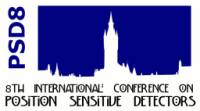Speaker
Mr
Khalid Alzimami
Description
The utility of 18F-deoxyglucose (18-FDG) in cardiology, oncology, and neurology has generated great interest in a more economical ways of imaging 18FDG than conventional PET scanners. The main thrust of this work is to investigate the potential use of LaBr3:Ce materials in a low-cost FDG-SPECT system compared to NaI(Tl) using GATE Monte Carlo simulation.. System performance at 140 keV and 511 keV was assessed using energy spectra, system sensitivity, intrinsic spatial resolution and count rate performance. The intrinsic spatial resolution results demonstrated the superiority of LaBr3:Ce crystals with respect to NaI(Tl) (e.g. 2.4 mm vs. 3.6 mm at 511 keV) . Comparison of the LaBr3:Ce and NaI(Tl) crystal-based systems showed 4.5% and 8.9% higher system sensitivity for the LaBr3:Ce at 140 keV and 511 keV, respectively. The LaBr3:Ce scintillator significantly improves intrinsic count rate performance due to its fast decay time with respect to the NaI(Tl). In conclusion, because LaBr3:Ce crystal combines excellent intrinsic count rate performance with slightly increased system sensitivity, it has the potential to be used for FDG-SPECT systems.

